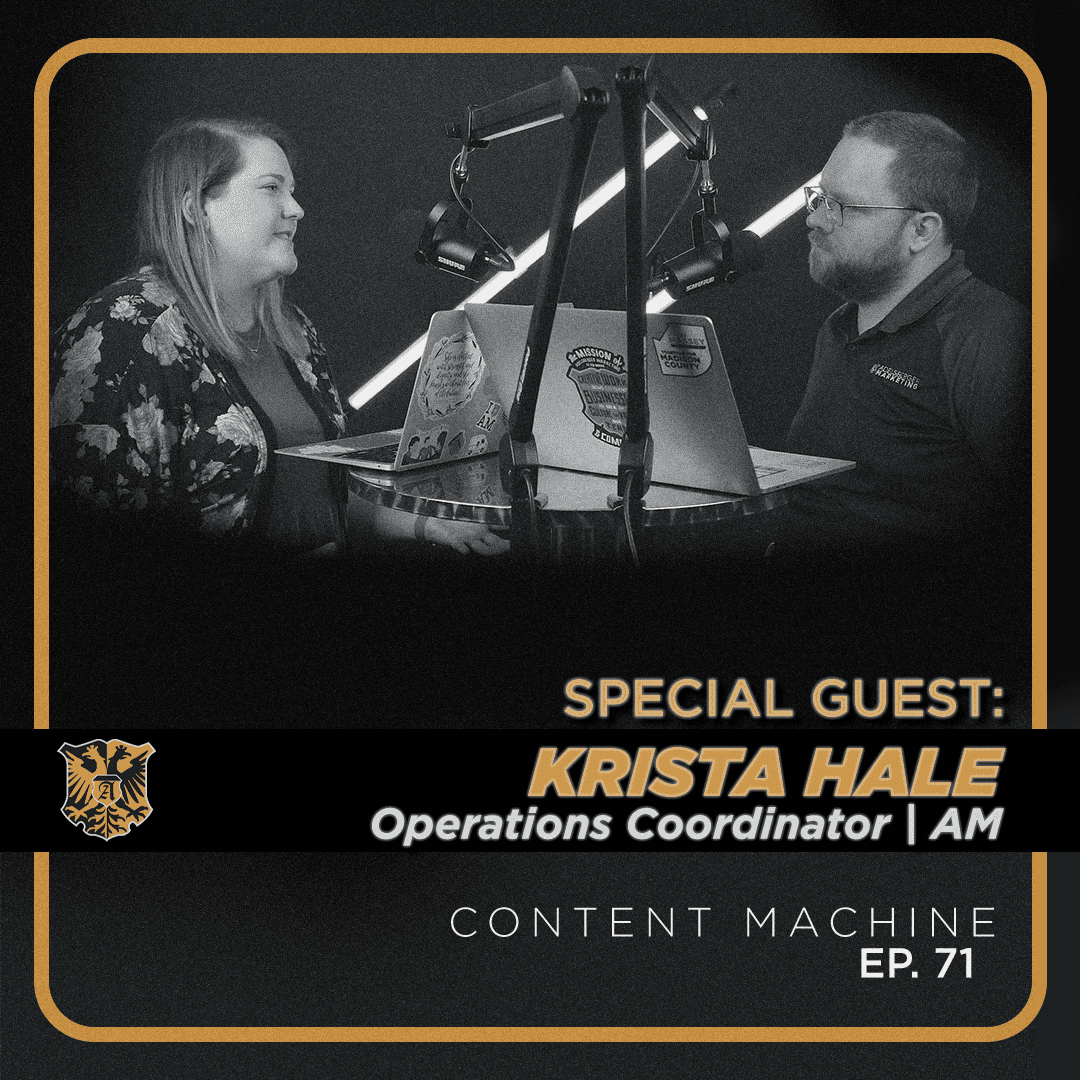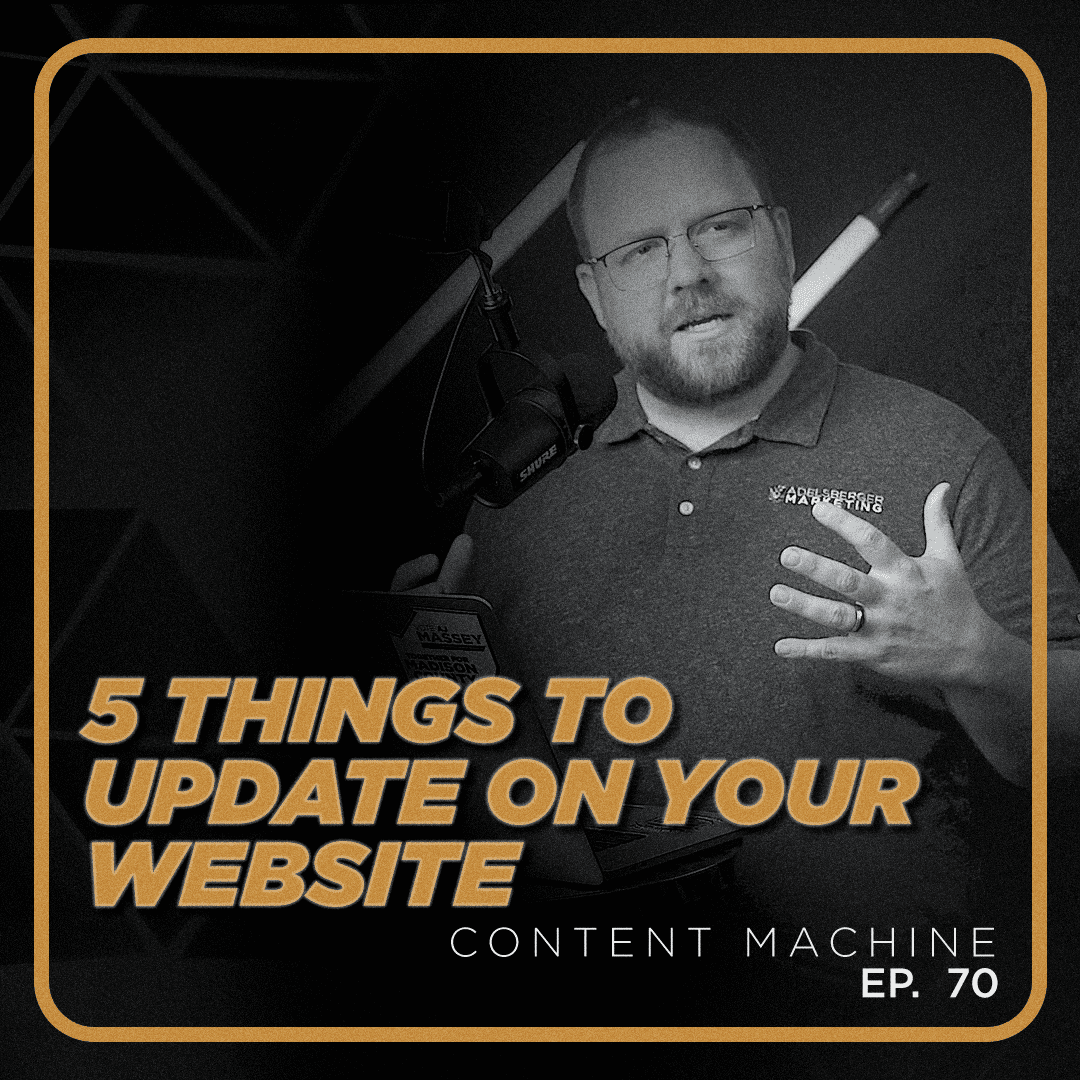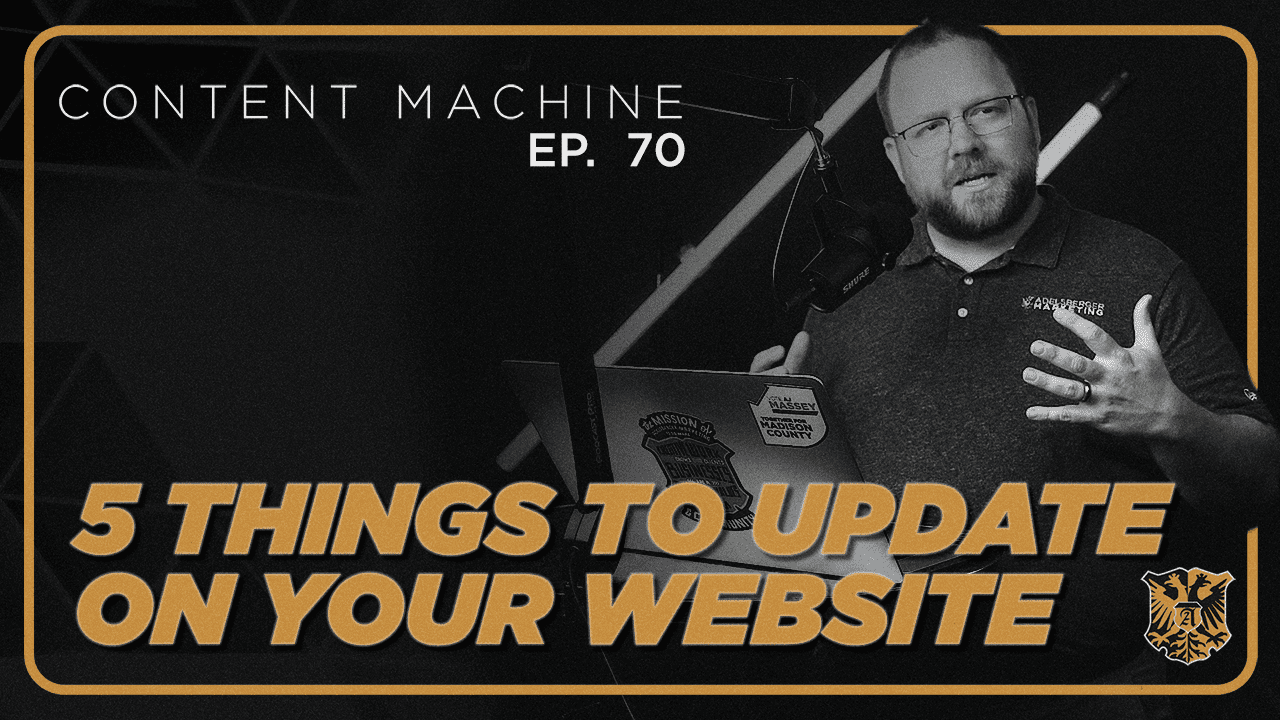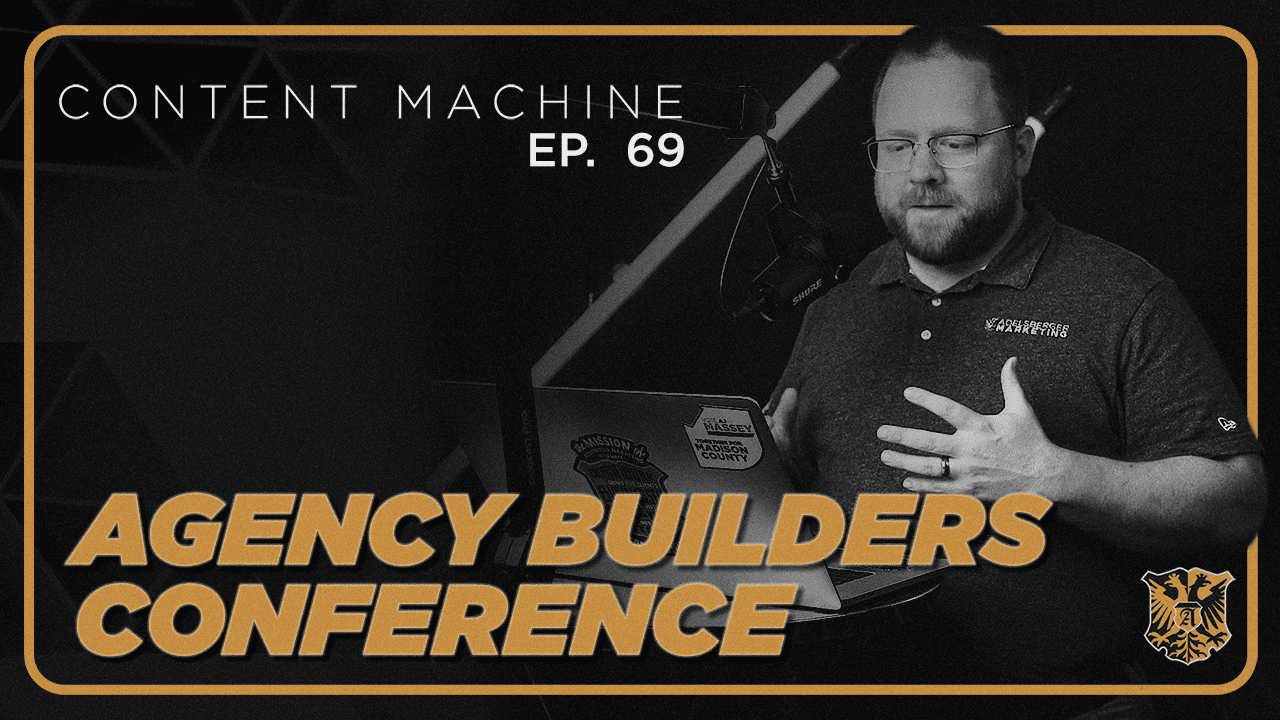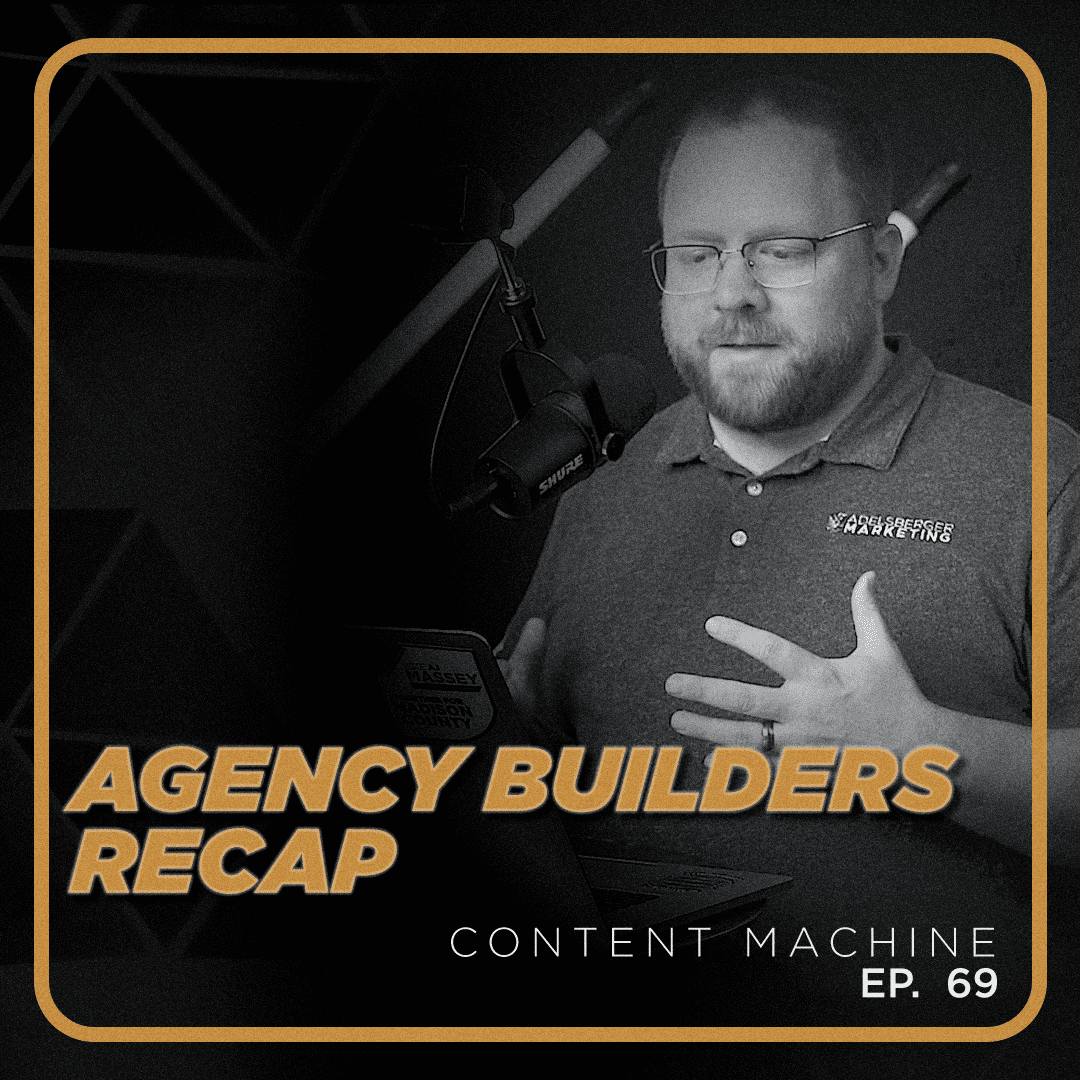Welcome to the Content Machine podcast. This week and next episode are going to be a little bit different because this fall, Adelsberger Marketing celebrates 10 years in existence. And I wanted to take a little bit of time to talk about how we’ve gotten to where we are in hopes that maybe as an entrepreneurial spirit, it will encourage you to start your own. How did we get started? Well, it started in a dark, scary night in Alexandria, Louisiana, when I was born in 1988. Just kidding, I’m going to skip ahead. But I actually was born in Louisiana, but I mostly was raised in Illinois. After I came to Union, I graduated with a degree in youth ministry. Most people don’t realize this. I actually scrubbed that from my LinkedIn at one point because as I was trying to get jobs in marketing, people would look at my LinkedIn profile and be like, Hey, you don’t have a degree in marketing. I just have a degree in arts on LinkedIn. It’s still that way today. But I I realized my senior year of college that I wasn’t supposed to be a vocational youth minister. Still very involved in the church and still very involved with the youth at our church.
But I was supposed to do something else vocationally. And so I started with something called the Americorps Vista program. The Americorps Vista program is like the National Peace Corps. And so you go to work in nonprofits. During the first nonprofit that I worked at, I ended up giving tours to most people that came through. And so I got really good at telling the story of the organization that I was in. As the youngest person of the organization, I ended up doing this social media as well. And this was during the Arab Spring. And so the the popularity and people seeing the value of social media increased a lot during that time, and I was a beneficiary of that. I was doing marketing there. I became friends with the guy who owns the burrito meal, my friend Sean, and I say owns the burrito meal, R-I-P, the burrito meal has been closed for a few years. But Sean was a guy just slinging burritos, and I was a guy wanting to do some stuff on the side. And so I started helping him with marketing. I designed my first business card for Sean in Pages on my Mac.
Now, Pages is a word processor, and that card was super ugly. But you know what? Sean liked it, and he was willing to pay me in burritos. And so I was doing the work at the nonprofit. I was working with Burrito Meal. And then my wife also at the time, was writing devotional material. And so I learned how lay out a book for self-publishing, build a website to promote it, do graphics and things of that nature. I was doing all these things, and then I switched nonprofits and came in as the manager of marketing and events. During that time, someone who’s It doesn’t have a design background. I ended up rebranding the center. We didn’t hire a firm. I did it in-house. That logo is still in use more than 10 years later. We designed the logo and rewrote the mission statement. Both of those things are still in use 10 years later, which blows my mind. But that workplace turned very toxic, and I was no longer able to continue to work there and be healthy. I’m not a stressed person, but every day coming into work, I felt this pain in my chest from the fear of working there.
Well, they started firing people, including my boss, and I found out about it through a third-party channel, not through work. And so I took the pleasure to walk in and quit on a Monday. And it’s a fun thing to get to quit a job that is not treating you right. And so during that process, knowing that they were going to start firing people, my wife and I had been talking. We’re both planners. And so she and I decided if I could give it a year, I was going to give it a year to try to be successful in starting my own business. And at a year, we would decide whether it was worth continuing or not. And so I had a timetable to work with to try to make the best run at starting a business that I had no No idea how to run or no idea how to start and give it a try. I quit in the fall. The co opened about the same time that I quit, and our fates have been intertwined ever since. The co opened up a lot of opportunities for me by connecting me with people. And one of those people was William Donnell.
William Donnell is a friend and a business friend and a friend on a personal level. I’m honored to call him a friend. He had customers coming to him that weren’t a good fit for his, at the time, website company. One of the first good customers that I had was Camp Voyager, owned by John and Charlie Erdmann. And William said, Hey, we’re not a good fit for you. Maybe you can call my friend Kevin. And so conversations that early on in the business made all the difference in the world that in the first three months of us starting the business, we knew it was going to be successful because of people like William. And then also people like Ben Ferguson at PPL. During this time, I also saw an opportunity to get involved with what I thought would be the future of media in Jackson, which is our Jackson Home. At the time, it was just a podcast about people in Jackson and things going on there. Now it’s turned into a magazine and a website and a whole bunch of other really cool things. But our Jackson Home in the early days, I helped design the logo and build the first website.
And so those things helped me make more connections that have been really helpful as we’ve moved along in time here. But one of the first things that I did for our Jackson Home was I made a video about Grubs Grocery when it opened. Now, let me tell you about that camera. I had a little bit of a website business going, doing a little bit of graphics, but I realized quickly when you’re building websites, you need photos. And so I needed a camera. And I went to my wife, whom I love and is very supportive of this, and I said, Hey, I need to spend $300 to buy this camera. And she did not like that idea. And And so I shelved it and I came back to her again, and she finally acquiesced after I bugged her enough. And that camera started a whole line of our business that is still growing today. So back in the day, it was buying a $300 camera, and now we have $30,000 of camera equipment at any given day. And so you just never know when those little bitty investments are going to pay off in the long run.
So we’re going to take a break, and we’ll come back in a future episode and talk about a little bit more history after that.


